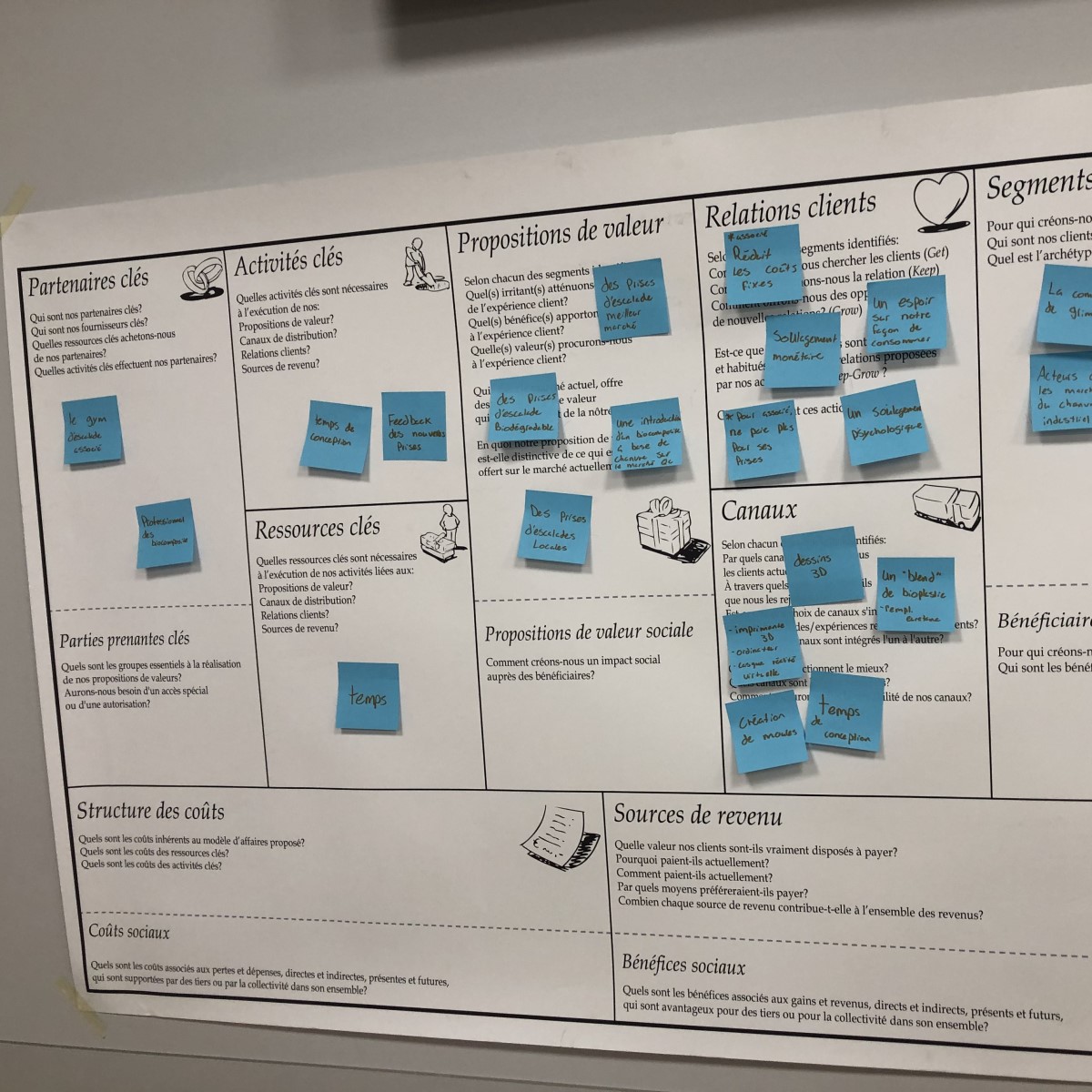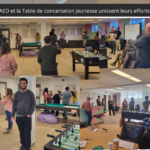
For almost a decade, the Lean startup approach [1] has changed the parameters and referents of how a project idea is carried out towards its realization. In this vein, the business plan, the preferred tool traditionally used, was introduced to the concept of the business model. The reflection around the business model occurs in an exploratory phase of rapid validation of hypotheses preceding the planning of the execution of the project.
Among the tools available, Osterwalder and Pigneur’s [2]Business Model Canvas (BMC) has been adopted by a large community supporting start-ups through an exploratory approach. After more than ten years of accompanying people in the development of their project ideas towards a viable business model, we introduced an adaptation of the BMC tool in light of our coaching and teaching practices to this day.
What’s new?
- BMC becomes CMP
Our tool, called Project Modeling Canvas (CMP), invites as many people as possible to use it, regardless of the nature of the project (personal project, startup or takeover of a company/organization, study project, innovation within a company/organization, research project, etc.);
The CMP is a tool strongly inspired by the BMC of Osterwalder and Pigneur and the reflections of Steve Blank. That said, not everything is necessarily “business” ; hence the project concept put forward while maintaining the rigour of the BMC methodology. The nine components of business model thinking and its basic questions are still present in the CMP; - Beyond the economic impact
Generating and maintaining economic value ensure the survival and sustainability of all projects. That said, the social, cultural, political and environmental aspects also deserve consideration. Questions are added in this sense; - In-depth value proposition
The very meaning of the project, what it contributes to the current experience, how it stands out and the desired impact, are added to the basic questions; - Details of the desired reflection on each component
Questions are added to clarify and lead an optimal and more independent reflection on modelling a project.
To download our CMP, click here!
[1] Blank, S. (2013). Why the lean start-up changes everything. Harvard business review, 91 (5), 63-72.
[2] Osterwalder, A., & Pigneur, Y. (2010). Business model generation: a handbook for visionaries, game changers, and challengers. John Wiley & Sons.










